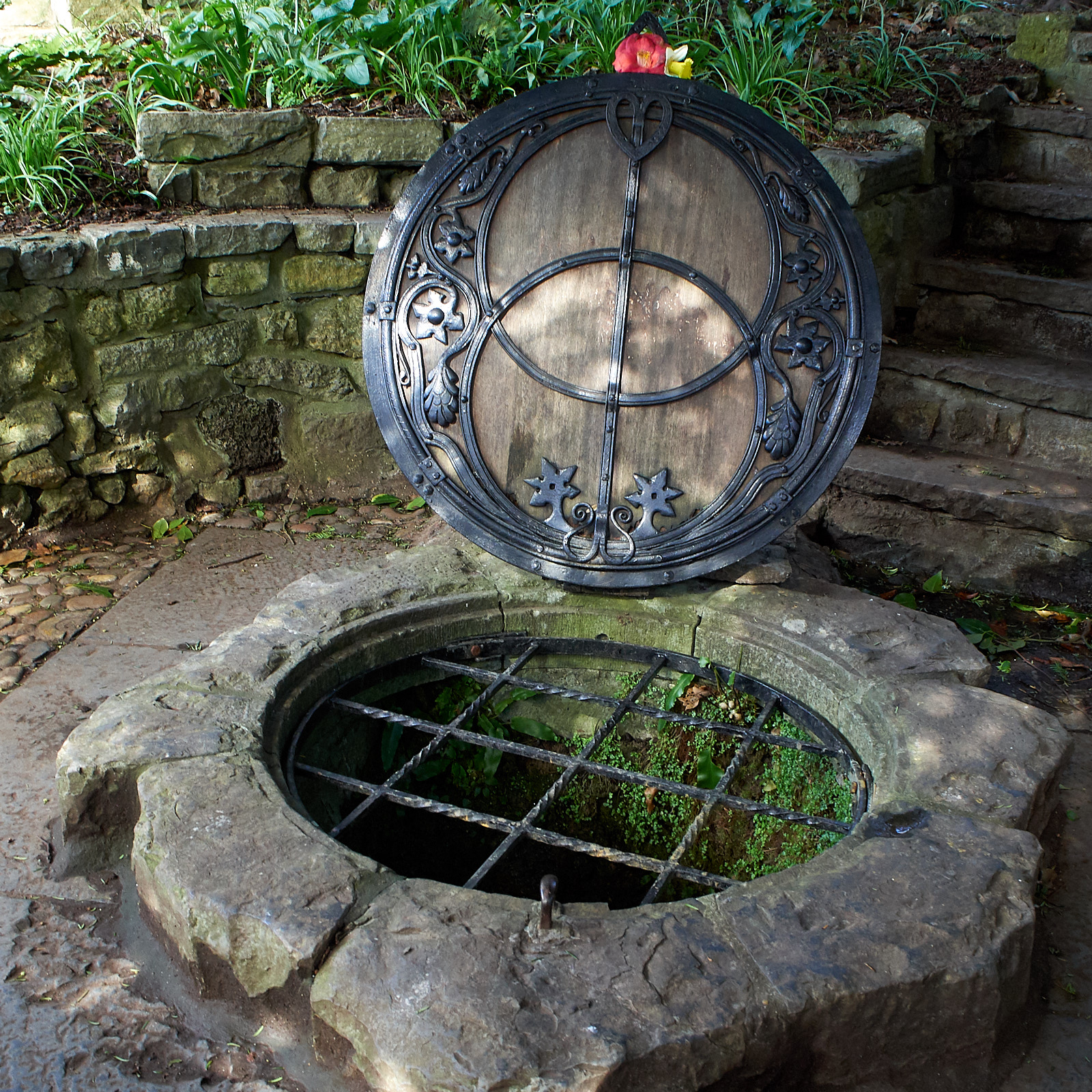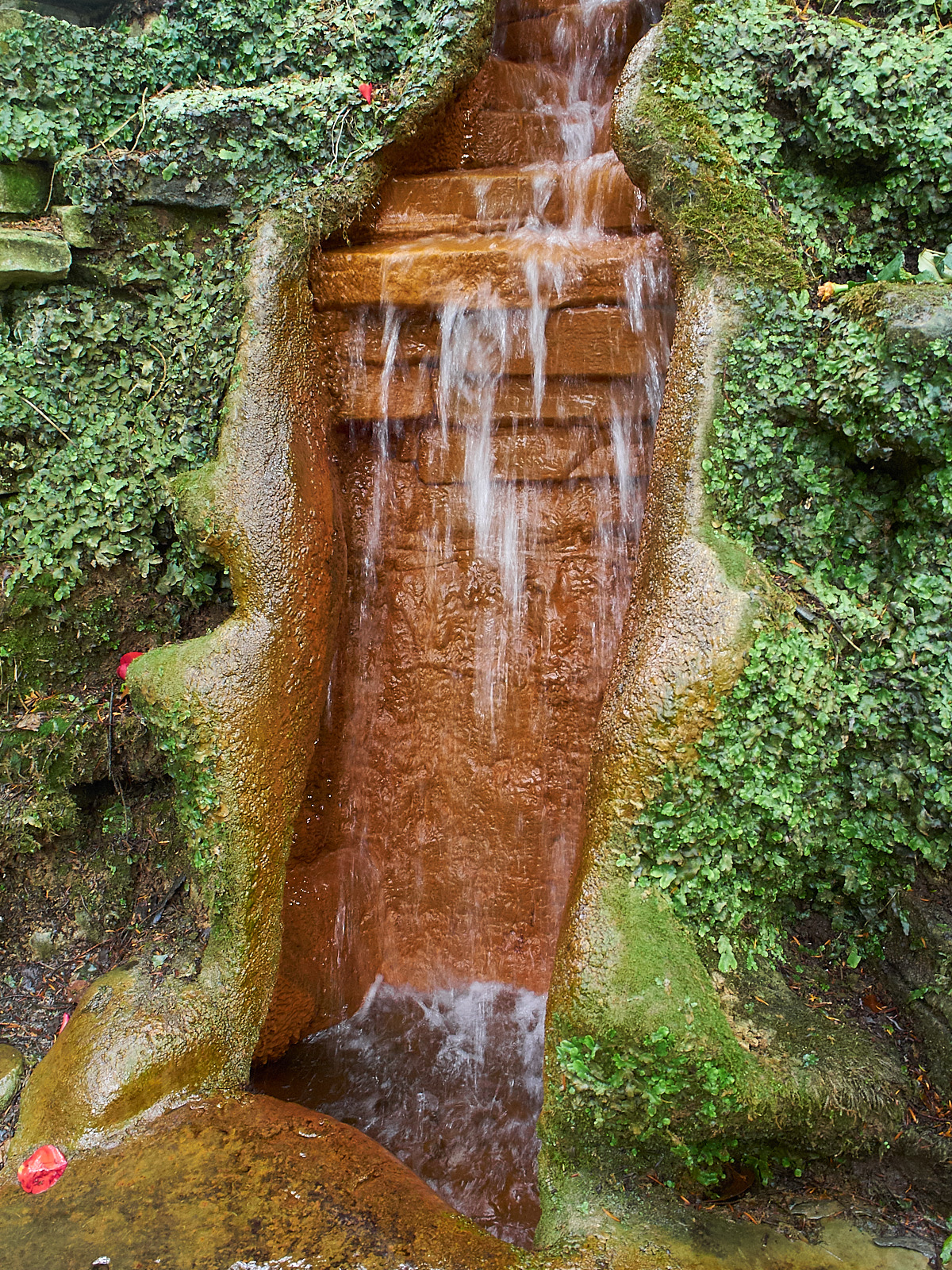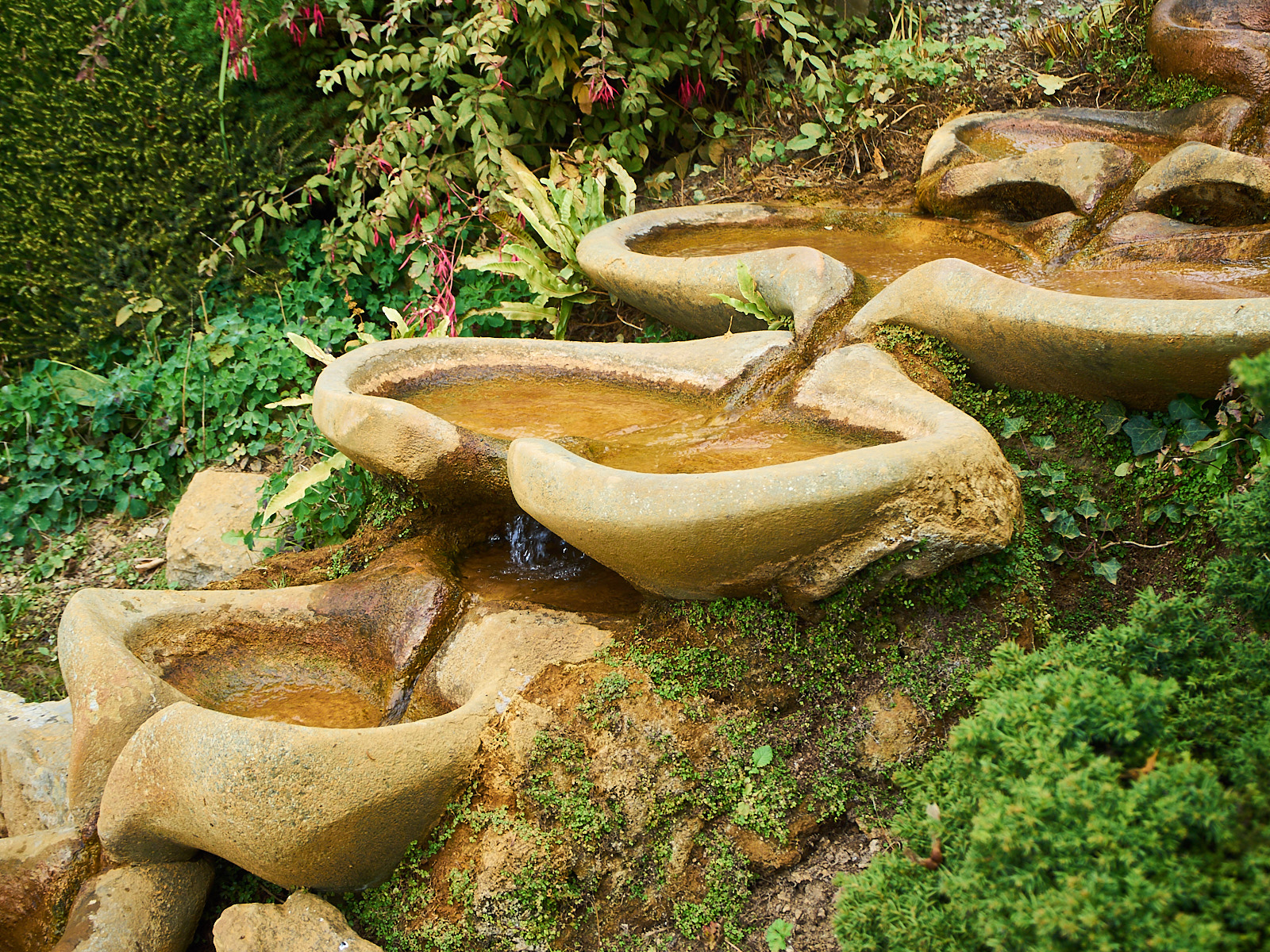Chalice Well - a listening experience
With all that water, Chalice well is quite a sensory garden as well as a visually attractive and peaceful pace to reflect. It is an interesting listening experience, and let’s start off with a musician’s insight into the wellhead at the top of the gardens, furthest away from the main road.

the sound of the Wellhead
If you get it to yourself take a listen to the sound of the water in the well-head, there is a distinct tone to it.
Steve Gardiner, a musician, wrote1 that he hears mainly overtones 7 and 9 in the sound of the wellhead, with a fundamental between E flat and D. Not having his perfect pitch I analysed the peaks of the recording at 109Hz and 139.2 Hz. Dividing these by 7 and 9 respectively give 15.57 and 15.5 Hz for the fundamental, which is pretty close and within the experimental error. That gives me a fundamental of half of B0. I am intrigued as to whether this changes over time.
The present wellhead is a hole made in the roof of the 12th century well-house2. When the well-house was made, it stopped the stream carrying away the silt brought down, which started to build up so the present-day level you see around the well-head is about 2m higher than it was in the 12th century.
There is some indication that very low frequencies can be conducive to a sense of spiritual awe. This has perhaps been used in religious ceremony over the ages, for example - church organs have pipes that go down to very low frequencies below 20Hz, which is normally taken to be the limit of human hearing. Playing the recording loud3 I can hear lower frequencies than I can hear on site4. This recording was taken right down on the grate, I don’t think the infrasound levels are anything like in a church organ. But sensitivity to infrasound varies a lot, so perhaps staying a while at the wellhead will give you a spiritual experience. It is a lovely place.

The waterfall in St Michael’s Court.
Water comes down a cascade before flowing into the shallow pool in St Michael’s Court where the hardy can bathe their feet in the cold water.
They’ve designed this quite nicely so you get a dynamic pulsing sound rather than the white noise of a big waterfall, with the plunge pool giving it some resonance. The rust colour is quite strong here as the water is oxygenated.
The flowform.

The flowform sends the waters through a series of oscillating swirls, moving through a clockwise vortex on one side, and an anticlockwise vontex on the other side. It’s worth taking the time to stand by the flowform to hear the soothing to and fro of the water.
Silent Minute
Around midday and in the afternoon typically around 3pm the old school bell is sounded at Chalice Well to instgate a minute's worth of silent reflection, along the lines of the wartime silent minute at 9pm which was at the inspiration of Wellesley Tudor Pole
The bell isn't particularly loud, but it can be heard over quite a big area - I have heard it at Cow Bridge on the levels, and it carries to where Wick Hollow meets Bulwarks Lane.
-
The Chalice, Journal of the Companions of the Chalice Well, Issue no 18, Spring 2007 p12ff (online – paywall ↩︎
-
Glastonbury. Philip Rahtz, 1993, p109 ↩︎
-
I recorded this on a still day with no low–frequency filtering but the recorder only goes down to about 20Hz. If you are playing this back on cheap earbuds then you aren't going to hear much below 50–100Hz anyway. Our brains can synthesise low frequencies from the higher harmonics, but you may not get the spiritual awe effect. ↩︎
-
Low frequency hearing is extremely sensitive to sound pressure level, this is why you need to turn music up to hear the bass properly ↩︎


Comments